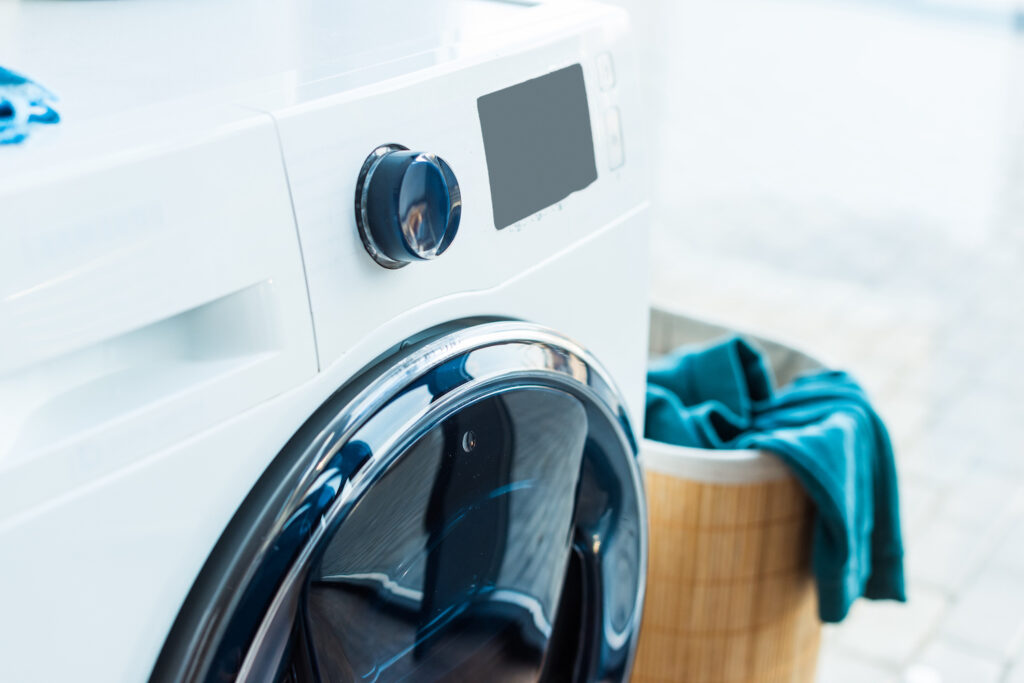Mold in Washing Machine: How to fix and prevent it
Is there mold in your washing machine? It’s worthwhile to check because it can make you and your family sick. It can also mean your clothes aren’t getting fully clean.

Much like your dishwasher, you likely don’t think of cleaning your washing machine very often. But your washer may hold on to tons of bacteria that you wouldn’t want anywhere near your clothes or circulating in your indoor air.
Mold in Washing Machine Problems
Checking for mold involves the use of the senses.
First, give the machine a visual inspection. Grab a flashlight and check every nook and cranny inside and outside of the machine. This should cover areas such as rubber seals, the inside of the drum, the soap dispenser, and the door.
Sometimes mold can be growing inside of the machine, either in a hidden area like the drainage pipe or because it’s early on in the mold’s lifecycle and the colony isn’t visible yet. In instances like this, smell around and inside of the machine. A musty, earthy, damp smell can indicate a problem.
Pay attention to the smell of any clothing coming out of the machine as well. If your clothes or towels smell musty or if the laundry room smells like mildew, it can indicate a problem
If you don’t notice either of the above issues, that doesn’t always mean there’s no mold problem. The last piece of the puzzle is to assess how you feel when around the machine and while wearing clothing that has been washed by it. Our bodies are amazing warning systems that will alert us if there’s a problem, such as exposure to mold, its byproducts, or bacteria. If any adverse health reactions develop, this can indicate a contamination problem in the machine.
How to Check Your Washer for Mold
Any area in the washing machine has the opportunity to get moldy if moisture is around. Mold is especially common in front load washers. These are the top places for problems in many machines.
- Rubber seal / gasket (front-loading machines)
- Laundry detergent/fabric softener dispenser
- The door
- Drainage pipes
- The drum
Thoroughness is key when it comes to properly cleaning a washing machine. Not only is it important to remove any mold particles, but also any potential bacteria, as well as byproducts of mold called mycotoxins. These particles are particularly difficult to remove, which is why being detailed is crucial.
How to Properly Clean Your Washing Machine
One thing to remember during the cleaning process is to not use bleach. This is not an effective product when it comes to mold spores because it can leave harmful particles behind. Any contamination remaining in the machine can lead to prolonged exposure. It also negatively affects your home’s air quality.
Here are the best steps for effective mold removal:
- Put on gloves and a mask for protection against any particles
- Pull out the detergent dispenser and soak in vinegar for at least half an hour
- Spray the entire interior of the machine down with white vinegar and allow this to sit for at least half an hour
- Wipe everything down with microfiber cloths (these are far better at removing particles than regular rags)
- Gently scrub the detergent tray, wipe with a microfiber towel, and replace it in the machine
- Place two cups of white vinegar in the washing machine and run it on the hottest cycle (if it has a sanitizing or self-clean cycle, use it)
- Place a botanical cleaner such as EC3 Laundry Additive into the detergent tray and run the machine on the hottest cycle
- Run one more wash cycle on hot water to get rid of any remaining particles
- Open the door and detergent tray and allow the machine to completely dry
How to Prevent Mold in Your Washer
The best way to deal with mold growth is to prevent it from occurring in the first place. There are several steps to ensure these appliances don’t get moldy. The ultimate goal is to keep the machine as dry as possible in between uses, remove any spores present, and eliminate as many food sources as possible.
- Leave the lid open and the detergent tray open when not using the machine
- Remove wet clothes immediately
- Wipe down rubber seals after washing to remove excess moisture
- Use the proper detergent (if it calls for high-efficiency products, that’s what should be used so that suds don’t build up in the machine)
- Use a botanical cleaner like EC3 Laundry Additive with every use (this helps eliminate particles from clothing and the washing machine)
- Clean the rubber gasket and lid seals once a week by spraying them with white vinegar and wiping with a microfiber towel
- Deep clean the machine once a month using white vinegar and the cleaning steps above.
- Inspect for wear, tear, and leaks (a malfunctioning machine can lead to excess moisture or particle buildup)
- Maintain an indoor humidity level of 30 to 50%
- Regularly use a home probiotic spray like Homebiotic.
These steps along with your regular green cleaning can help you get rid of mold in your washing machine and prevent it from coming back.

